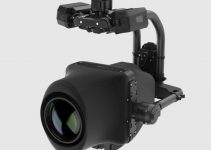Gyro stabilization is becoming a standard for Sony cameras. Every new camera they’ve released from the FX9 to the A7C has incorporated this fantastic, new method of post stabilization. Unlike in-camera IBIS and other post-stabilization methods like the warp stabilizer in Adobe Premiere Pro, gyro stabilization records the camera’s motion and stores it as metadata in the file.
In theory, this metadata should make smoothing out your bumpy shots easier, faster, and with fewer weird, warpy motion artifacts. The A7S III has Gyro, IBIS, and active electronic stabilization, but the A7C lacks the EIS features so gyro is the best you’re going to get with this camera. Is it enough?
Test-driving the stabilization options for the A7C, Stefan Malloch gives us a breakdown of what you can expect from this budget-friendly 4K super shooter.
As stabilizing images go, Sony isn’t known for its fantastic IBIS systems. In fact, it’s common knowledge that their 5-Axis IBIS is actually pretty weak compared to the competition so aside from any external stabilizers you’ve got in mind, Gyro stabilization is really going to be your best bet.
There are some drawbacks to consider when using Gyro stabilization that you should know. Chiefly, gyroscopic stabilization can’t be used in-tandem with IBIS, and depending on your turnaround time and processing power the use of gyro stabilization might be impractical. But if it’s used the right way, the results that you can achieve with this feature can be outright amazing.
Currently, the metadata from the gyroscopes in the camera can only be read by Sony’s Catalyst software and those clips have to be processed and exported. Check out our article from a few months back How to Get Perfectly Stabilized Handheld Shot with the A7S III without a Gimbal that covers how to use this feature in greater detail.
Compared to IBIS, Gyro really blows it out of the park. Once IBIS is turned on, you’re at the mercy of this system and there is no going back. Gyro stabilization gives you flexibility in post to determine how much stabilization you want. You can make things butter smooth or just a little less shaky, but with Gyro more stable footage means an image crop.
But since this is an added step, it’s difficult to compare to warp stabilizers, like the one in Premiere Pro. Warp Stabilization can be added to a clip inside the NLE and that makes life pretty easy in post. It scans every image in the clip and makes a determination of how to stabilize the image; however, warp stabilization is a guessing game and gyro stabilization is based on hard data.
Often warp stabilization locks onto the wrong object in the frame and things can get pretty weird with wobbly edges and no so pleasant results. In Stefan’s example, it took his system 26 minutes to stabilize a clip in Catalyst that it only took the warp stabilizer 6 minutes to correct.
That’s a lot longer to have to wait, but it should be noted that you could easily waste 20 minutes tweaking the settings to get the best results from the warp stabilizer in Premiere.
It’s best to keep your images as stable as possible while shooting, and only use these features to correct accidents and not to see them as a replacement for a gimbal. If you know you’re going to be pressed for time in post, use a gimbal in the field and don’t add tasks you don’t have the time to process.
[source: Stefan Malloch]
Order Links:
Sony Alpha a7C Mirrorless Digital Camera (B&H, Amazon)
Sony Alpha a7 III Mirrorless Digital Camera (B&H, Amazon)
Disclaimer: As an Amazon Associate partner and participant in B&H and Adorama Affiliate programmes, we earn a small comission from each purchase made through the affiliate links listed above at no additional cost to you.


